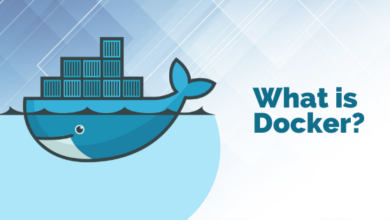
Introduction to Kubernetes: Revolutionizing Modern Application Deployment
In the rapidly evolving world of software development, agility, scalability, and reliability have become paramount. Traditional methods of deploying and managing applications are no longer sufficient to meet the demands of modern, cloud-native applications. Enter Kubernetes, an open-source platform that has fundamentally transformed how we deploy, manage, and scale applications. Developed by Google and now maintained by the Cloud Native Computing Foundation (CNCF), Kubernetes has become the de facto standard for container orchestration, enabling organizations to manage complex, multi-container applications with ease.
Kubernetes, often abbreviated as K8s, was born out of the need to manage applications at scale, ensuring that they are resilient, scalable, and portable across different environments. It abstracts the underlying infrastructure, allowing developers to focus on building and deploying applications without worrying about the complexities of the underlying hardware or cloud provider. This abstraction is what makes Kubernetes so powerful—it provides a consistent and reliable way to manage applications regardless of where they run.
What is Kubernetes?
Kubernetes is an open-source platform designed to automate the deployment, scaling, and management of containerized applications. Containers, such as those created by Docker, encapsulate an application and its dependencies, allowing it to run consistently across various environments. However, managing containers at scale can be challenging, especially in a microservices architecture where an application is broken down into multiple, loosely coupled services.
Kubernetes addresses these challenges by providing a robust framework for orchestrating containers. It groups containers into logical units called “pods,” which are the smallest deployable units in Kubernetes. These pods can be scaled, moved, and managed across a cluster of machines, known as nodes. Kubernetes automates the distribution of these pods across the nodes, ensuring high availability and optimal resource utilization.
Key Components of Kubernetes
To understand the usefulness and benefits of Kubernetes, it’s important to be familiar with its key components:
- Cluster: A Kubernetes cluster consists of a set of nodes (machines) that run containerized applications. A cluster is composed of a master node, which controls the cluster, and worker nodes that execute the applications.
- Pods: The smallest unit of deployment in Kubernetes, a pod is a group of one or more containers that share the same network namespace. Pods are ephemeral, meaning they can be created, destroyed, or moved as needed.
- Services: Kubernetes services define a logical set of pods and a policy by which to access them. This ensures that even if a pod dies and a new one is created, the service maintains the same endpoint, allowing for consistent communication.
- Deployments: Deployments define the desired state of an application, such as the number of replicas of a pod that should be running. Kubernetes ensures that the current state of the application matches the desired state, automatically scaling or rolling back as needed.
- ConfigMaps and Secrets: ConfigMaps allow for the management of configuration data, while Secrets store sensitive information, such as passwords or API keys, securely within the cluster.
- Ingress: Ingress manages external access to the services within a cluster, typically through HTTP or HTTPS, providing a way to expose applications to the outside world.
Also Read
Benefits of Using Kubernetes
Kubernetes offers a multitude of benefits that make it an essential tool in the modern developer’s toolkit. Here are some of the key advantages:
- Scalability: One of the most significant benefits of Kubernetes is its ability to scale applications automatically. Whether you’re handling a sudden spike in traffic or preparing for long-term growth, Kubernetes can scale your application up or down based on demand, ensuring optimal performance and cost efficiency.
- High Availability and Resilience: Kubernetes is designed to ensure that your applications are always running and available. It automatically manages the distribution of pods across nodes and can detect and replace failed pods, ensuring that there is no downtime. Additionally, Kubernetes can replicate pods across different nodes and even across different data centers, providing a high level of redundancy.
- Portability: Kubernetes is cloud-agnostic, meaning it can run on any cloud provider or on-premises infrastructure. This portability allows organizations to avoid vendor lock-in and to deploy their applications in the environment that best suits their needs. Kubernetes also supports hybrid and multi-cloud environments, enabling seamless movement of workloads across different platforms.
- Simplified Deployment and Management: Kubernetes automates many of the tasks associated with deploying and managing applications, such as load balancing, scaling, and monitoring. This automation simplifies the process, reducing the potential for human error and freeing up developers to focus on building features rather than managing infrastructure.
- Resource Optimization: Kubernetes optimizes the utilization of resources within a cluster, ensuring that applications are distributed efficiently across nodes. This optimization not only improves performance but also reduces costs by minimizing the need for additional hardware or cloud resources.
- Rolling Updates and Rollbacks: With Kubernetes, you can perform rolling updates to your application without downtime. If something goes wrong during an update, Kubernetes can automatically roll back to the previous version, ensuring that your users are not affected by any issues.
- Extensibility: Kubernetes is highly extensible, allowing you to integrate with various tools and services to enhance its functionality. Through its robust API, you can extend Kubernetes to meet your specific needs, whether that involves custom controllers, operators, or third-party plugins.
- Community and Ecosystem: Kubernetes has a vibrant and active community that continuously contributes to its development. This large ecosystem of tools, extensions, and integrations means that you have access to a wide range of resources and support, making it easier to adopt and scale Kubernetes within your organization.
Use Cases of Kubernetes
Kubernetes is versatile and can be applied to various scenarios, including:
- Microservices Architecture: Kubernetes excels in managing microservices-based applications, where different services need to be deployed, scaled, and maintained independently.
- Continuous Deployment and Integration (CI/CD): Kubernetes can be integrated into CI/CD pipelines, automating the deployment of new code changes and ensuring that applications are always in a releasable state.
- DevOps and Infrastructure as Code (IaC): Kubernetes aligns well with DevOps practices, enabling teams to manage infrastructure through code, automate deployments, and improve collaboration between development and operations teams.
- Hybrid and Multi-Cloud Deployments: Kubernetes’ portability allows organizations to deploy applications across multiple clouds or a combination of on-premises and cloud environments, providing flexibility and resilience.
- Big Data and Machine Learning: Kubernetes can be used to manage data processing jobs and machine learning workloads, ensuring that resources are allocated efficiently and that jobs are executed reliably.
Kubernetes has revolutionized the way modern applications are deployed, managed, and scaled. Its powerful orchestration capabilities enable organizations to build resilient, scalable, and portable applications, while reducing the complexity of managing infrastructure. As businesses continue to adopt cloud-native practices, Kubernetes will remain at the forefront, providing the foundation for innovation and growth.
Whether you’re a small startup or a large enterprise, Kubernetes offers the tools and flexibility needed to navigate the challenges of modern application development. By embracing Kubernetes, organizations can achieve greater agility, reduce operational overhead, and deliver better software faster, making it an indispensable asset in the ever-evolving world of technology.








